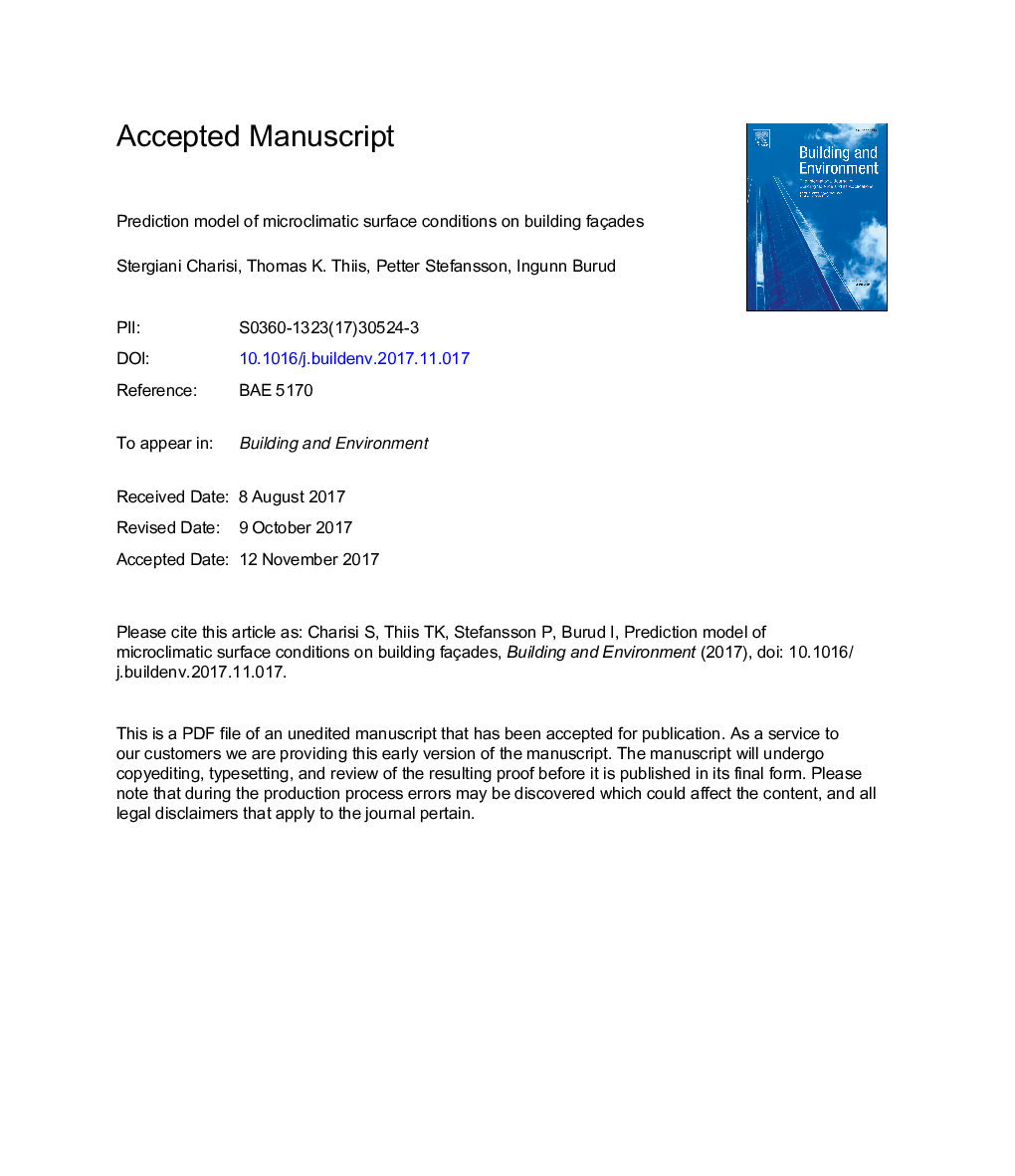| Article ID | Journal | Published Year | Pages | File Type |
|---|---|---|---|---|
| 6698287 | Building and Environment | 2018 | 19 Pages |
Abstract
The microclimatic surface conditions of a building façade are critical for determining the degradation of the façade material. Most models use the ambient temperature and RH to predict mould growth and decay on building materials. On the other hand, Heat, Air and Moisture (HAM) simulation software able to calculate the surface conditions, treats the whole façade uniformly without including architectural characteristics of the façade, such as window sills or overhangs, which can have shadowing effect. A simulation model that takes into consideration both the local microclimate and the spatial architectural characteristics of the façade has been developed to predict the spatial surface temperature and moisture content over a whole façade. The model is validated through measurements for two different building façades - wooden consisting of aspen (Populus tremula) and masonry consisting of red fire clay bricks. The measurements include monitoring of the spatial surface temperatures with an infrared camera, and logging of the surface moisture content of selected points on the façade using wood resistance humidity sensors. The validation shows that the simulation model can predict the microclimatic surface conditions with high accuracy and can sufficiently capture the spatial variations of surface temperature and moisture content over a building façade.
Related Topics
Physical Sciences and Engineering
Energy
Renewable Energy, Sustainability and the Environment
Authors
Stergiani Charisi, Thomas K. Thiis, Petter Stefansson, Ingunn Burud,
